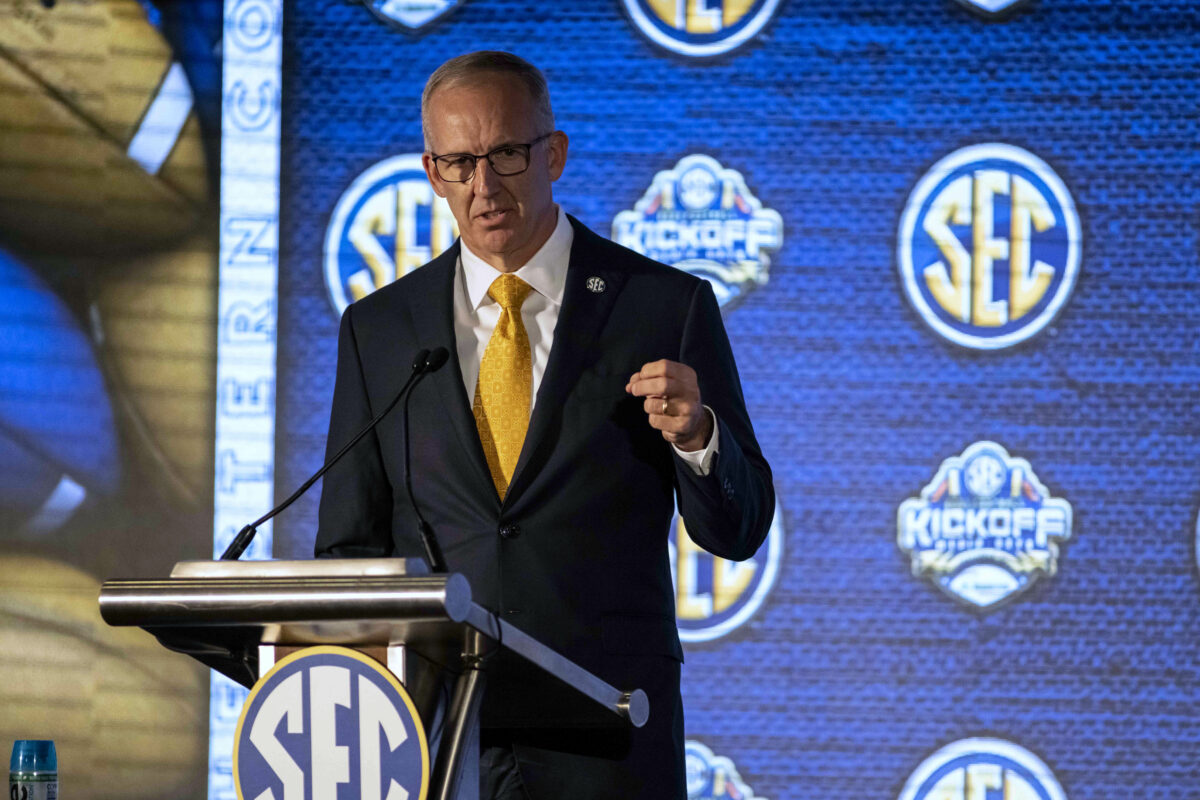The ground on which college football competes is once again shaking.
At a time when college athletics is going through its share of changes, another major domino in the game of conference realignment seems set to fall. According to the San Jose Mercury News, and since confirmed by multiple news outlets, Southern Cal and UCLA are heavily considering a move from the Pac-12 to the Big Ten as soon as 2024.
Source: USC and UCLA are planning to leave for the Big Ten as early as 2024. Move *has not been finalized* at the highest levels of power.
— Jon Wilner (@wilnerhotline) June 30, 2022
As of this afternoon, the schools’ move had reportedly moved closer to a formality. According to ESPN’s Pete Thamel, USC and UCLA’s departure from the Pac-12 could be official as soon as tonight.
The expected bombshell would be the latest move toward what some believe will be the formation of mega conferences within college football. Last year, Oklahoma and Texas announced their departure from the Big 12 for the SEC effective no later than 2025.
The moves will push the Big Ten and SEC’s memberships to 16 schools apiece.
Just got off the phone with someone who believes this eventually leads to two megaconferences — the Big Ten and SEC — with 20 or more members apiece.
— Nicole Auerbach (@NicoleAuerbach) June 30, 2022
Not only is the West Coast schools’ pending move a blow to The Alliance — a handshake pact made among the Pac-12, Big Ten and ACC last year in response to the SEC’s expansion — but it also brings further into question the existence of the Pac-12, ACC and Big 12 as Power Five conferences
Might some of the ACC’s top brands be of interest to the conferences that are poaching? While the Big Ten and SEC have media rights payouts that would be far more than what schools like Clemson and Florida State are getting as ACC members, leaving the ACC isn’t that simple.
The league has a grant-of-rights agreement that every ACC member is locked into until 2036. As part of that agreement, any school that tries to leave the ACC before then would give up its TV revenue.
But times, particularly in the world of college football, are changing. And there could be more coming.
Photo credit: Joshua A. Bickel/Columbus Dispatch/USA Today Network
USC & UCLA move to Big Ten should be completed by Friday & Big Ten may not stop at 16, sources told @ActionNetworkHQ. Big 12 may get aggressive & look to add Arizona, Arizona State, Colorado & Utah. “We’re headed to super conferences,” source saidhttps://t.co/um8DBJVJ9s
— Brett McMurphy (@Brett_McMurphy) June 30, 2022










